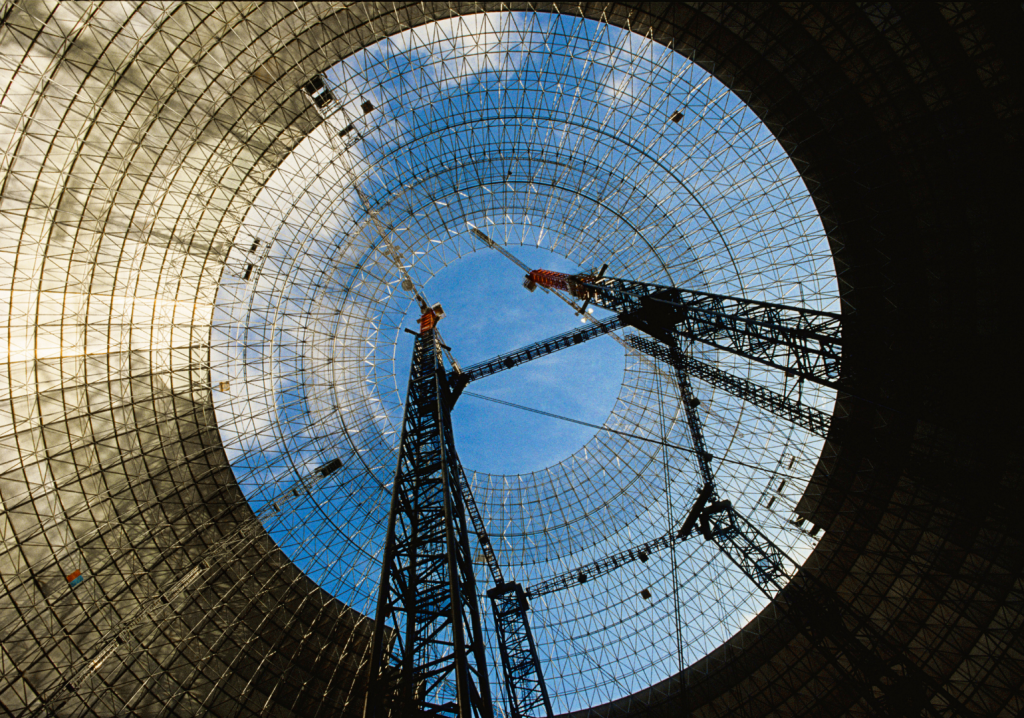Australia’s Chief Circular Engineer Ali Abbas explains the challenges and solutions to engineering a dramatic change in the way we build.
When facing a housing crisis, trying to build new houses as fast as possible in an environment of supply chain restrictions and other materials restraints, it is very easy to push sustainability aside – or at least for it to become a secondary priority.
That has occurred in Australia over the last few years, according to Ali Abbas, Deputy Head of Chemical and Biomolecular Engineering at the University of Sydney, Professor of Chemical Engineering, and founding director of the Waste Transformation Research Hub.
However, Abbas said that at the same time there have been positive moves toward sustainability and circularity.

“The Barangaroo precinct in Sydney, for example, is a very good example as one that has been thought through with sustainability in mind,” Abbas said.
“It has set new standards for sustainable urban development, mainly because it incorporates extensive use of recycled materials and sees buildings designed for long-term adaptability.”
To further introduce circularity into construction projects, Abbas said, engineers and architects must have it as their single priority during the design stage, rather than simply discussing circularity as an abstract concept.
“In that early design conversation, we want to be talking about the life cycle and the end of life of the materials in that particular build,” he said.
“Most important is this idea of design where you can assemble the building but also be able to easily disassemble it and reuse it. So, let’s no longer focus on recycling. We’re talking about reuse. Those reuse conversations have to ramp up.”
Maintenance records more important than ever
If engineers are to reuse materials in new builds – H beams, fire systems, cladding materials and so on – they need to know exactly how those materials have been treated over their past lives.
“Disassembly is only practical if it’s coupled with Building Information Modelling and data,” Abbas said. “I’m seeing sophistication on that front where you’re able to draw the building construction process in a digital form, all the way down to bolts and nails.”
“As we get better and better at this, we are going to be able to track those materials and how they are used. We are moving towards digital product passports, which are starting to be regulated in places like Europe.”
Digital product passports enable the mapping and tracing not only of materials that went into the manufacture of particular products, but also their past construction uses and the maintenance conducted during their past lives.
Also more easily tracked will be the materials intensity of the building, and the pollutants or toxic materials that exist within particular products or within their production.
“If that material or that product had a material that was manufactured from a process that used a toxic chemical, it will have to be reported,” Abbas said. “That chemical will have to be excluded from the manufacturing process in jurisdictions where the digital passport exists.”
Innovation occurs under duress
Businesses connected to construction, particularly those in supply chains, are going to have a challenging time with the various expectations and regulations around circularity. The transition to circular construction, Abbas said, will introduce constraints.
“Businesses are going to need to be very practical and balanced around this transition,” he said. “It’s already complex, because of the traditional conversation around energy and emissions. Now it’s even more so because we’re also talking about materials and contaminants.
“So, a balance needs to be struck. We don’t want to see industry debilitated because of circular economy policy. But to be successful, it must be appropriately measured.”
A typical and positive outcome in times of constraint is innovation. The biggest innovations have previously come as a result of the constraints of war, he said.
Looking through that lens, considering the constraints regulations around circularity will introduce, it appears we’re about to take an exciting leap into a new era of innovation.
We can already see this revolution beginning to take shape, Abbas said, with developments around low-carbon concrete, around wood as a structural material in tall buildings, around waste materials being used in cladding and even around biological, mycelium-based manufacturing of construction materials.
“There are also advancements connected with the use of materials in advanced manufacturing, not just in prefab but also in additive manufacturing, 3D printing entire homes whilst building in features such as acoustics and thermal insulation.
“As materials science innovations intersect with digital tools, AI innovations and data innovations, new possibilities for construction are going to be unlocked.
“That’s the exciting part. It’s about how we can do much better in terms of developing housing solutions that can be easily retrofitted, disassembled and reused, rather than destroyed.”
Perhaps the biggest challenge, greater than economic factors, regulatory hurdles or technological gaps, is that of entrenched industry practices, Abbas said.
“That cultural challenge poses significant barriers,” he said. “Construction has long been dominated by linear thinking. The focus has been on building as quickly and as cheaply as possible.
“Engineers need to pause and look at design as a core activity focused on end of life and on disassembly. We need designs for the built environment that will sustain not just 50 years, but multiple lifetimes of the materials.”
